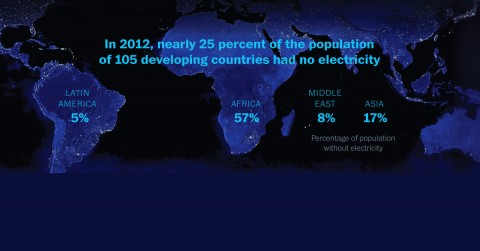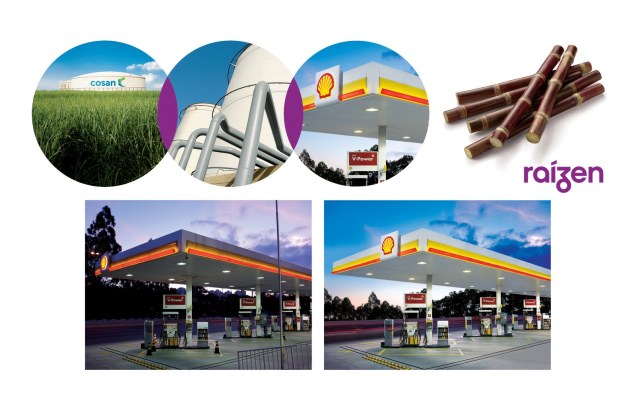Home » Posts tagged 'developing nations'
Tag Archives: developing nations
A Development Bank for The Commonwealth
by John Brian Shannon | October 27, 2016
The World Bank, the International Monetary Fund, the Kuwait Fund, the African Development Bank Group, the Grameen Bank, and more recently, the Asian Infrastructure Investment Bank are all highly respected development banking institutions — but not one of them are dedicated to the improvement and well-being of the nation states that make up The Commonwealth of Nations.
And that’s a shame. The Commonwealth of Nations spans the globe, it encompasses nation states with tiny populations measured in thousands, to India with 2.2 billion citizens (consumers) by 2025, and nations that range from the 5th-largest economy in the world (Britain) to the tiniest economies in the world — and everything in between. Huge resource wealth, almost boundless agricultural opportunity, ocean access, tourism, and many other benefits await for development banks, corporate financial institutions, and private investors.
Wealthy Commonwealth nations can find much to like about investing in other nations that lie within the Commonwealth organization, in resources, in agriculture, in reasonable labour costs, in tourism, and more.
Such an institution could pool funds, create a bank, get some immediate projects rolling, and quickly generate some bank profits — profits that will simply be re-invested in the next project somewhere within the Commonwealth.
For a relatively small investment relative to the total Commonwealth GDP, come outsized gains in involvement by other members of that organization, a greater level of economic success among and between member nations, and much gain to offer banks, infrastructure construction companies and their supplier corporations.
Each development loan between Commonwealth nations further strengthens the Commonwealth and thereby, all of the nations in the group are strengthened.
If ever there were a textbook case upon which to base a successful development bank, The Commonwealth nations are it.

Hydro-electric dams in developing nations are highly valued by government, corporations, and citizens alike — and represent low risk and steady income for development banks and private investors. Image courtesy of pluginindia.com
Whether in the energy sector, agriculture, tourism, and in other segments of the developing economy, having a Commonwealth-only development bank distinctly geared towards financing and providing design and engineering expertise will benefit investor nations, commercial banks, and private investors — and provide a double benefit for those developing nations growing their economies while trying to provide better services for citizens.
How can Britain Afford This?
Britain is one of the most generous donor nations in the world, paying out some .71% of GDP in foreign aid annually. Few countries surpass this (Norway pays out 1% of GDP to foreign aid) but most fall well-short of Britain’s foreign aid commitment.
Canada, for instance pays .20% of GDP (and its total GDP is much smaller than the UK) and EU foreign aid spending averages .45% of GDP.
Instead of directing .71% of it’s GDP to non-Commonwealth nations, Britain should continue to pay .71% of GDP towards development aid, but spend it within the Commonwealth bloc exclusively.
In that way, billions of pounds sterling can immediately begin to strengthen Commonwealth economies, with two-way trade becoming dramatically enhanced between Britain and member nations.
Building a new hydro-electric dam, a major bridge, or a superhighway system in a Commonwealth nation?
Please source as much steel, hardware, and expertise, etc. as you can from the UK. And for developing nations without major construction firms large enough to take on megaprojects, please allow British firms to bid on your construction project.
Seems reasonable, doesn’t it?
Summary
By redirecting all of Britain’s foreign aid to Commonwealth of Nations countries exclusively, the UK will strengthen ties between Britain and all of those nations.
It will also serve to increase GDP of those nations, while British construction firms and their infrastructure hardware suppliers would get a welcome boost. As GDP growth leaps forward in member nations, demand for goods, skilled labour, and interim project financing from Britain will increase at a linear pace.
For developing nations within the Commonwealth, it’s the fast-track to developed nation status, higher GDP growth, better and sooner services for citizens, and (typically) a more stable economic and political situation.
And that’s better for everyone in this world, Commonwealth citizen, or not.
Boosting Britain’s GDP 5% in three easy steps
by John Brian Shannon | October 18, 2016
Opportunities as big as the sky abound regarding UK exports to developing nations that need everything, and needed it yesterday.
India with 1.5 billion people now and 2.2 billion by 2025, need massive upgrades to their electrical grid. Although India has made great strides in recent years, some 400 million people living in rural areas of the country have never had electricity.

Is Britain ready to export electricity grid expertise and grid components to India’s 400 million citizens who have never had electricity in their homes? Such opportunity with real benefits for both nations!
Filling that need over the next two decades will cost hundreds of billions of dollars (if the Americans do it) but that begs the question Why leave it to the U.S.A. alone?
Such an opportunity represents hundreds of billions pounds sterling if the UK takes on part of that project — with significant opportunities to earn revenue by financing such projects — financing which are likely to be guaranteed via some combination of Indian government bonds, World Bank funding, and IMF loans.
Not only that, of course. India has a growing middle class with real purchasing power that want to purchase quality cars and trucks, housewares, electronics, and just about any product manufactured in the UK.
Further, Indian corporations need access to world class financing and market exposure afforded by the London financial sector, and some of the world’s preeminent legal and architectural firms have an obvious role in helping India to become all that it can and should be.
GCC kingdoms are always searching for evermore high-end warplanes and civilian jetliners, and they are always quick with the money. And, especially nice, no bickering when it comes time to pay the bill.
The GCC has transformed in recent years due to massive expansion in the formerly sleepy fishing villages of Dubai, Abu Dhabi, and Ras Al Khaimah — turning them into thriving financial centres, replete with stunning architecture and residential communities.
In fact, some of the most famous buildings in the world are located in those three cities and were designed by world class architects based in London, engineered by the most advanced engineering firms in the world, along with a host of other services such as project management, financing and property management, many London-based.
In the GCC, it isn’t about whether they have the money, because they sure do. It’s about having a presence and being there to meet opportunities as they arise.
In places like Dubai, major projects are envisioned, mooted, and completed in less than four years. Which is about the amount of time it takes to get just a simple development proposal permit approved in some cities. The message there is; Don’t nap, or you’ll miss it.
Brazil. The country’s formerly strong economy has taken some shocks in recent years. Both economic and political shocks have caused damage to the Brazilian economy, but that also presents many opportunities for investor groups. Huge Brazilian conglomerates that are barely holding together for now could be a real bargain for investors with sterling to spare.
What is great about commodity based economies is that when the price rises, it doesn’t get any sweeter. And when commodity prices are low, it’s almost always a good time to buy stock in those companies, or just buy the whole company.
Sugar from Sugarcane – and Biofuel Made from Sugarcane
Companies like Cosan and Raizen have the advantage of selling their sugarcane in two very different markets.
If the price of sugar is high, then the twice-yearly sugarcane crop gets sold as sugar commodity, or as finished sugar product at the retail level.
But when sugar prices drop, those same corporations simply sell their sugarcane to the huge biofuel market in Brazil, where 92.9% of Brazil’s cars run on a minimum 22% biofuel blend (E20) as mandated by Brazilian law, with many cars burning 100% biofuel (E100) which significantly lowers vehicle emissions and respiratory related healthcare spending across Brazil’s largest cities.

Raízen, the joint biofuel venture between Royal Dutch Shell and Cosan Ltd. is the 3rd-largest energy company in Brazil. Image courtesy of Raízen.
“A life cycle assessment by the Yale School of Forestry on jatropha, one source of potential biofuels, estimated using it could reduce greenhouse gas emissions by up to 85% if former agro-pastoral land is used — or increase emissions by up to 60% if natural woodland is converted to use.
In addition, biofuels do not contain sulfur compounds and thus do not emit sulfur dioxide.” — Wikipedia Aviation Biofuel
Aviation Biofuels
With global aviation accounting for 2% of total anthropogenic (human-caused) CO2 emissions, now is the time for Britain to legislate 50/50 blends of biofuel and conventionally sourced petroleum aviation fuel. Many airlines are already doing exactly that. Notably, the US Navy is doing the same as part of it’s Great Green Fleet programme. Biofuels can also help to moderate jet fuel costs when conventional fuels skyrocket due to wild price swings.
By switching commercial aircraft to 50% biofuel blends, aviation related CO2 emissions would drop by half and respiratory illness healthcare spending would drop by billions.
Summary
What makes these three opportunities so tantalizing are the sheer numbers; India with 2.2 billion consumers by 2025, the GCC nations with their unquenchable thirst for the trappings of a wealthy society, and Brazil for it’s commodities, especially the sugar/biofuel synergy with the opportunity to cut global aviation emissions by half.
With the right vision, the right approach by the British government, and some dedicated effort and follow-up by HM government, it should prove to be a cakewalk to grow the British economy 5% by 2021 (separate from already planned growth) on the strength of those three opportunities alone.
Related Articles:
Read: Sweetening The Biofuel Sector: The History of Sugarcane Ethanol in Brazil
Read: Sugar-Cane Fuel Wins in Brazil as Cheap Ethanol Beats Gasoline
Read: Shell and Cosan invest $1 billion to boost Brazilian biofuels

